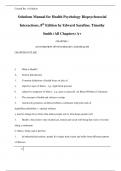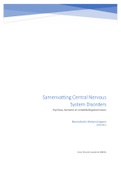Exam (elaborations)
Solutions Manual for Health Psychology Biopsychosocial Interactions, 8th Edition by Edward Sarafino, Timothy Smith (All Chapters) A+
- Course
- Institution
- Book
Solutions Manual for Health Psychology Biopsychosocial Interactions, 8th Edition by Edward Sarafino, Timothy Smith (All Chapters) A+..
[Show more]





